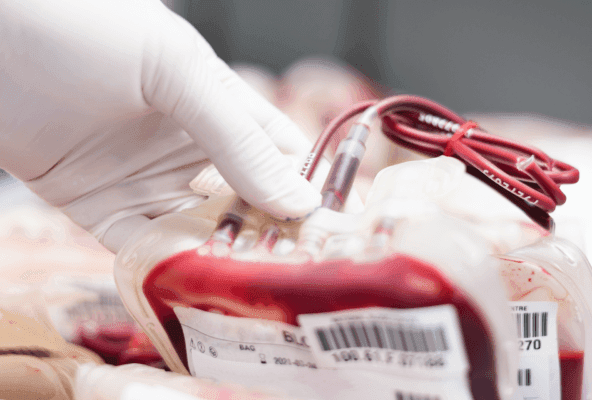Survey: Americans’ perceptions of Apple Vision Pro and Neuralink in healthcare
Futuristic Tech is here to stay. Learn how healthcare practitioners and patients feel about these latest tech innovations.

As technology and healthcare increasingly connect, two major developments stand out: the launch of Apple Vision Pro and the start of Neuralink’s clinical trials. This article shares insights from a Tebra survey of 130 healthcare professionals and 1,003 Americans, exploring their views on these technological advancements. We’ll highlight the healthcare industry’s readiness, public trust in tech leaders, and the willingness to adopt such innovations.
From the potential of the Apple Vision Pro in transforming patient care to the controversial yet intriguing capabilities of the Neuralink brain chip, we aim to shed light on the future of healthcare in the digital age.
Key takeaways
- 48% of healthcare practitioners feel positively toward futuristic technology for treating patients.
- 43% of healthcare practitioners support Neuralink as a healthcare innovation.
- Nearly 1 in 5 Americans would be more likely to go to a healthcare practitioner using the Apple Vision Pro or similar emerging technology, while 1 in 4 would be less likely.
- 64% of Americans distrust Elon Musk’s public updates about Neuralink.
- Over 1 in 8 Americans would be interested in purchasing the Neuralink when/if it becomes available.
Healthcare practitioners’ perspectives on current and future tech
What do healthcare professionals really think about current medical technology and the potential of devices like Apple Vision Pro and Neuralink for patient care?

Healthcare practitioners rate the current state of technology in healthcare at a solid 7 out of 10, indicating general satisfaction. This finding also suggests that there’s room for further advancements to enhance patient treatment and operational efficiency. However, healthcare professionals were divided on new technology like the Apple Vision Pro and Neuralink.
While 36% of practitioners viewed these advancements positively, seeing them as potential game-changers for patient care, a nearly equal proportion, 40%, expressed concerns or skepticism about their integration into healthcare settings. Despite this division, almost half (48%) of practitioners felt positive about using such technology for treating patients, highlighting a cautious yet optimistic outlook toward the role of cutting-edge innovations in healthcare.
Only 1% of practitioners have used Apple Vision Pro in healthcare settings. However, an additional 4% plan to use it, indicating a growing interest in its potential applications.

According to practitioners surveyed, the Apple Vision Pro would make the most impact on the following healthcare practices:
- Medical training or education (45%)
- Telemedicine and remote healthcare (38%)
- Diagnostic visualization (32%)
Now, let’s turn our attention to Neuralink.

A notable 43% of healthcare practitioners support Neuralink as a healthcare innovation, showcasing a strong belief in its potential to revolutionize medical treatment. The most impactful use cases identified by practitioners for Neuralink included:
- Brain-to-computer communication (32%)
- Cognitive enhancement (27%)
- Understand the human brain better (26%)
Looking ahead, practitioners are cautiously optimistic about Neuralink’s role in healthcare, with 1 in 4 believing that Neuralink will become a viable option for patient treatment within the next decade. Over 1 in 3 practitioners envision Neuralink evolving into a direct-to-consumer device, hinting at a future where such technology isn’t just a medical tool but part of everyday life.
American public’s perspectives on futuristic tech
Next, we shift focus to the American public’s response to the Apple Vision Pro and Neuralink, revealing their thoughts about these groundbreaking technologies, their willingness to adopt them, and their perceived value.

Only 5% of the Americans surveyed have had the opportunity to use an Apple Vision Pro, but 42% said they want to try it. Ownership remains low, with 1% currently owning the device and 5% planning to purchase one soon.
The $3,500 price tag is a major hurdle for many, with two-thirds of Americans deeming the Apple Vision Pro too expensive. They would consider spending around $1,100 on average for such technology, indicating a large gap between the perceived value and the current market price.
Surveyed Americans’ thoughts on the best uses for the Apple Vision Pro varied widely, including:
- Entertainment and augmented reality (AR) experiences (67%)
- Health and fitness (21%)
- Design and creativity (19%)
This diversity in potential use cases reflects this tech’s broad appeal, extending beyond the initial tech-savvy audience to include applications in health, wellness, and creative industries.
When it comes to healthcare, the impact of the Apple Vision Pro is polarizing. Nearly 1 in 5 Americans said they would be more inclined to visit a healthcare practitioner who uses the Apple Vision Pro or similar technology, suggesting a subset of the population values tech-forward healthcare providers. Conversely, 1 in 4 would be less likely to choose a provider based on the use of such technology, possibly due to concerns over its efficacy, privacy, or the impersonal nature of tech-based interactions.
American sentiment on Neuralink

A significant majority, 64% of Americans, expressed distrust in Elon Musk’s public updates about Neuralink, indicating a skepticism that underscores the challenges in communicating the benefits and safety of such advanced technology. Despite this skepticism, there’s a notable curiosity about Neuralink’s potential, with over 1 in 8 Americans interested in purchasing the device should it become available.
Financially, Americans seem willing to invest a substantial amount in Neuralink technology — an average of $3,068. This indicates recognition of its potential value, particularly for its top anticipated use cases:
- Health monitoring (43%)
- Cognitive enhancement (42%)
- Enhanced learning (32%)
These priorities reflect a broad interest in leveraging Neuralink to improve quality of life, from maintaining health to accelerating personal development and learning capacities.
A technologically enhanced healthcare future
As we stand on the brink of a new era in healthcare, marked by the fusion of cutting-edge technology with medical practice, the journey toward a technologically enhanced healthcare future looks both promising and complex.
The insights from Tebra’s comprehensive survey of healthcare professionals and the American public highlight a cautious optimism toward integrating devices like Apple Vision Pro and Neuralink into patient care. With practitioners and patients alike recognizing the potential of these innovations to revolutionize treatments, improve diagnostics, and enhance training, the path forward demands careful consideration of ethical, practical, and financial implications.
Methodology
For this study, Tebra surveyed 130 healthcare practitioners and 1,003 Americans to gather their sentiments on futuristic technology, particularly the Apple Vision Pro spatial computer and Neuralink brain chip.
About Tebra
Tebra provides digital tools, insights, data and support to support patients, deliver modern care, help practices get paid quickly, and operate efficiently. To learn more about how Tebra is committed to improving patients’ and providers’ success and well-being, visit www.tebra.com.
Fair use statement
Are you fascinated by the intersection of technology and healthcare? If you find the insights from our latest survey compelling and wish to share them with your audience, we invite you to do so for non-commercial purposes. We kindly request that you provide attribution by including a link back to this page, ensuring that readers have access to the full context of the study and its methodology.
Stay Ahead with Expert Healthcare & Billing Insights
Get the latest industry updates, financial tips, and expert strategies — delivered straight to your inbox.

Suggested for you
Stay Ahead with Expert Healthcare & Billing Insights
Get the latest industry updates, financial tips, and expert strategies — delivered straight to your inbox.









